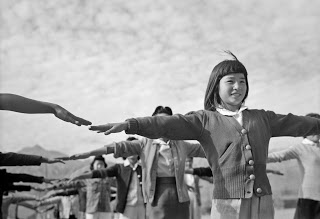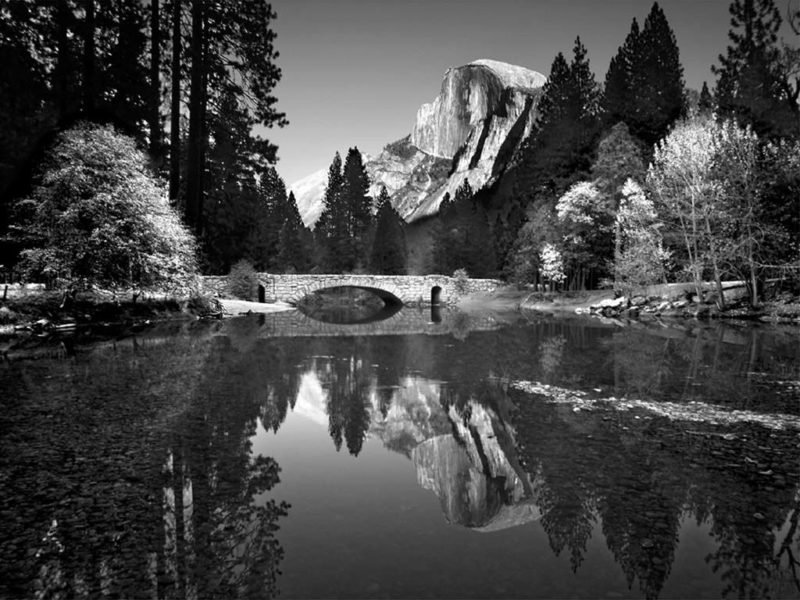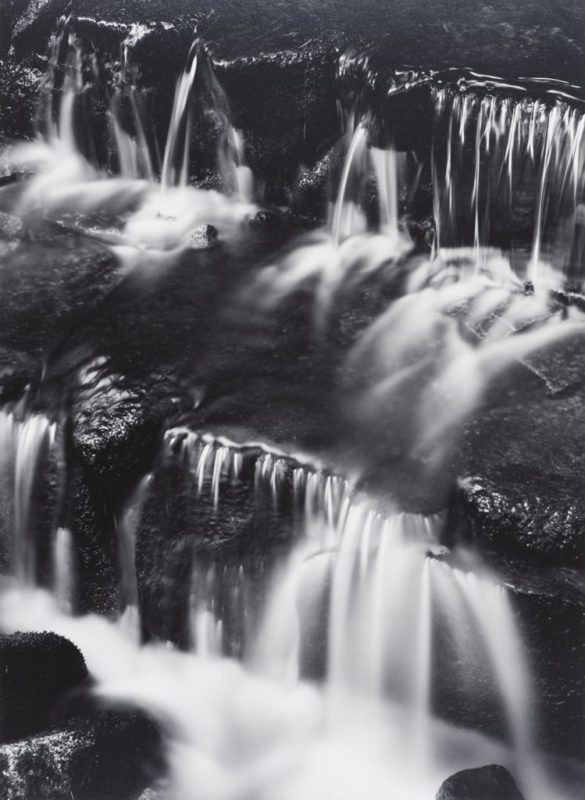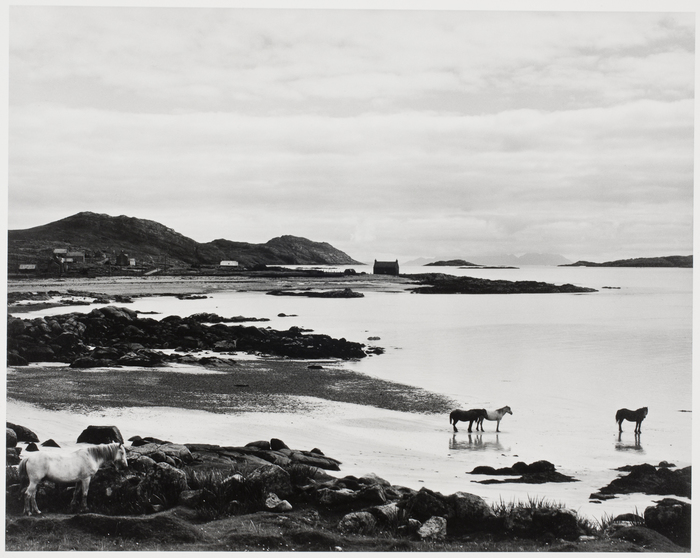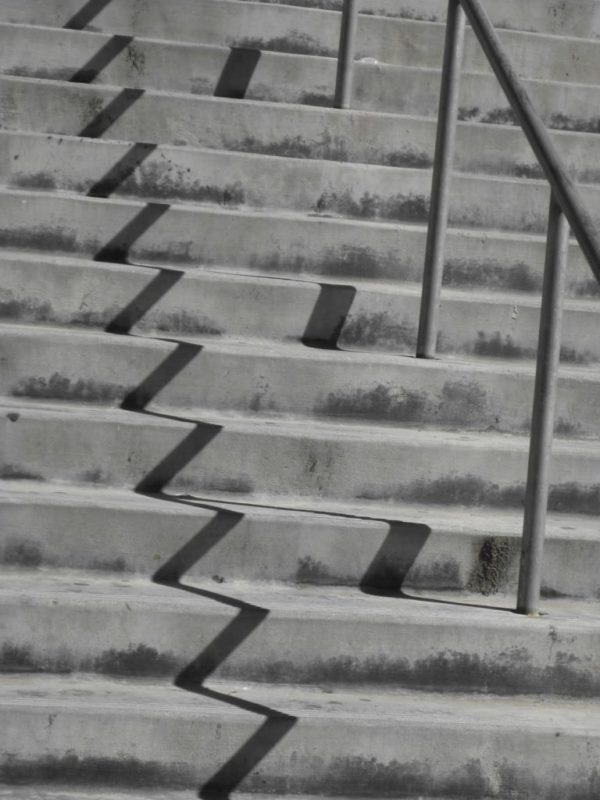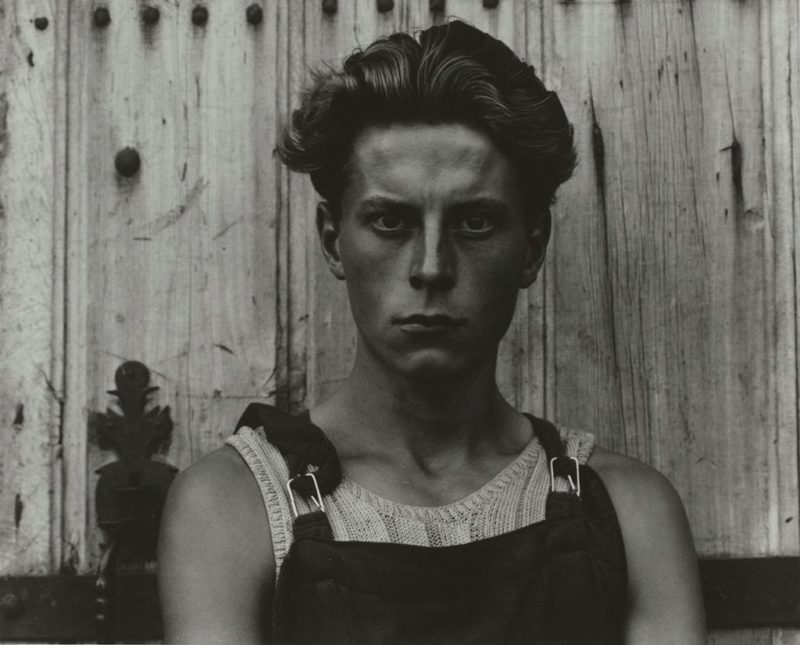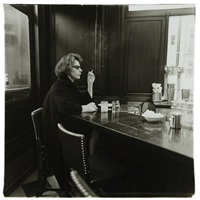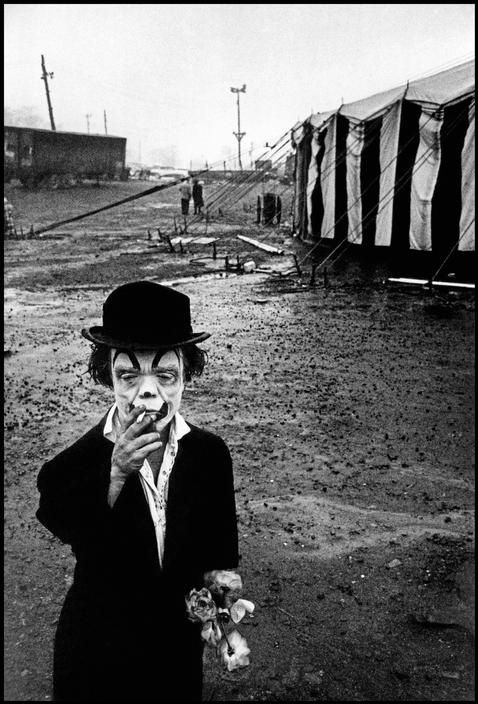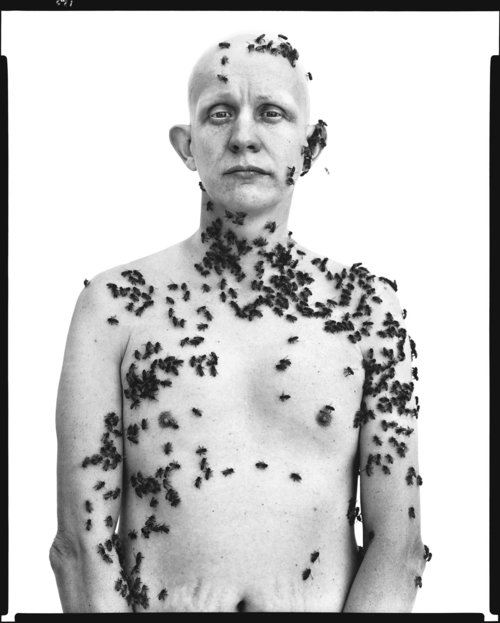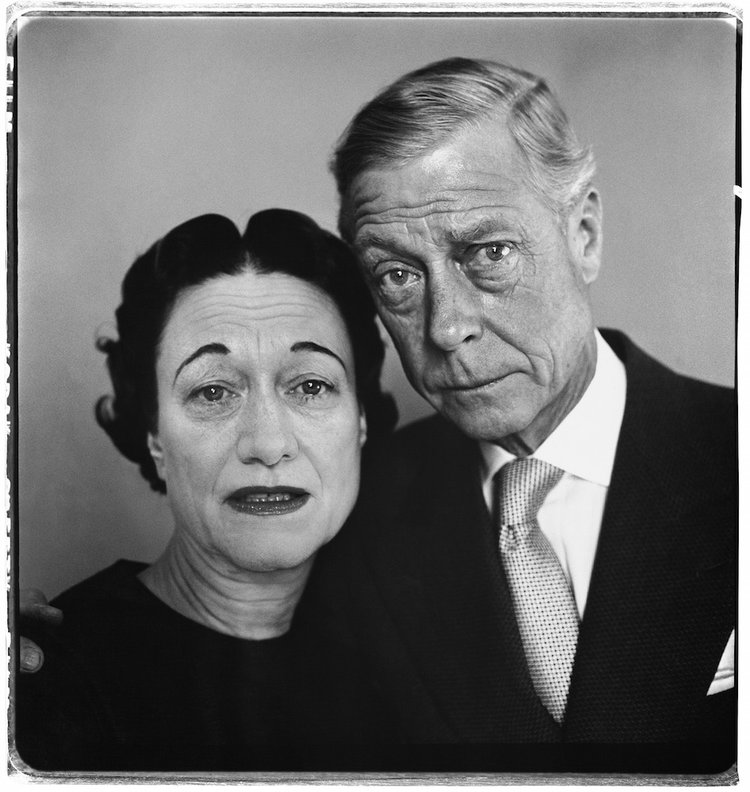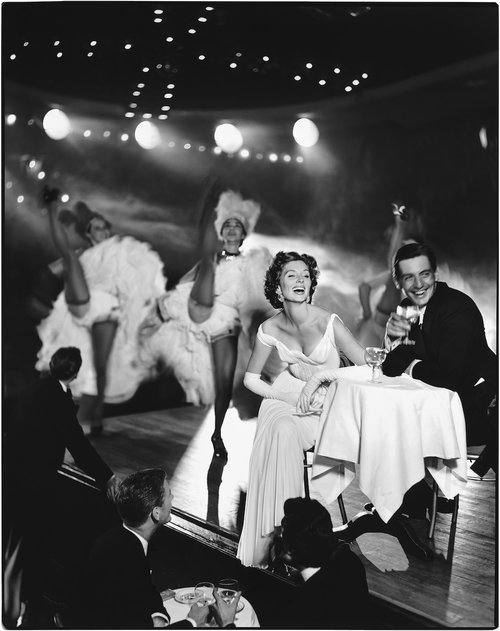Part 1: Classic Influences
Ansel Adams
1) Ansel Adams was an incredible landscape and environmental photographer. He was known most for photographing national parks and western America. Within his landscape photographs, he used contrast to really emphasize a scene. Whether it be the water from a lake or river or the mountains against the trees, he knew how to create an image that had lights and darks up against each other. He also used natural special effects to his advantage while he was photographing landscapes. He photographed a lot of waterfalls and would always use slow shutter speed to create beautiful flowing water. And he would utilize foggy days to create eye-catching images. In addition to special effects and contrast, Adams knew how to use emotion within his images, especially when he was capturing images of people.
2) During the middle of his career, World War II started. Adams was upset with the way the American Government treated the Japanese following Pearl Harbor. He requested permission to visit one of the Japanese American internment camps. Adams felt that if he were to create a photo-essay of what he discovered it would also upset others who saw his images. In addition to WWII, Adams visited Native American reservations to photograph them to show how they were living.
3) For me personally, I am really inspired by the way Adams is able to use contrast and natural special effects within his images. Considering his images are in black and white, it creates a challenge for contrast since contrasting colors is much easier to shoot. I hope to use his technique of using water as a way to create life, contrast, and movement within my images. Additionally, I’ve always struggled with shooting people. I feel as though I am always making them feel uncomfortable or awkward. I find his images of people moving because he is able to capture their raw emotions. I hope to do this one day.
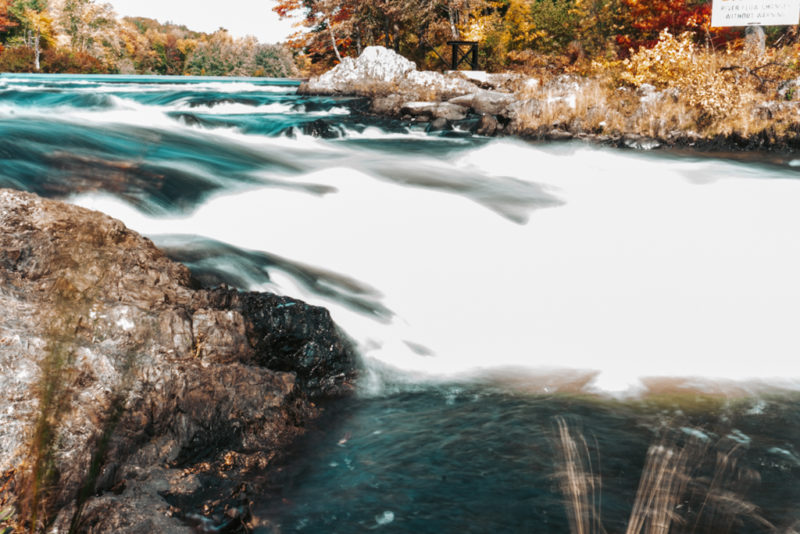
Paul Strand
1) Paul Strand was a modernist photographer, who helped establish photography as an art form. He was a big advocate for “straight” photography. This means that he wanted his images to be sharp and in focus, almost like a painting. Within his photographs, he was especially good at using his depth of field to capture a scene and a moment. He used the foreground, middle ground, and background to his advantage each time he took an image. In addition to using dof, Strand used lighting to his advantage, especially the shadows that were created. While he was shooting street photography, he knew how to frame an image to create eye-catching shadows that would draw a viewer in. Lastly, Strand was extremely good at capturing the subject. Since he was an advocate for straight photography, his images involving people were telling of what the people were doing during the time of the photograph. The emotions are raw, and the images are encapsulating.
2) As I said above, Strand really brought photography to the forefront of the 20th contrary art world. Before him, photography was not really considered a form of art. He was able to convey photographs to people that showed still images of everyday life. Strand’s images also had underlying social constraints against them. He wanted to show the world how some people lived and in order to get that message across, he tried to capture images without others knowing. Strand created modern photography and that is why his images are still so well-known and studied today.
3) The stillness and rawness within Strand’s photographs are a big part of why he inspires me as a photographer. He was able to capture a single moment in time and that is something I hope to do. The way he played with lighting and shadows is also something I’d like to continue to try and improve on.

Part 2: Early Modern Influences
Diane Arbus
1) Diane Arbus was an outstanding photographer of the early modern era. Her photographs focused on people and she was able to capture her subjects in their natural places. She used framing and especially the rule of thirds to bring an interesting and new perspective into her photographs. Also, she would become friends with her subject so they would trust her to shoot whenever. This allowed her to capture specific and unplanned moments in time. Her timing was a huge part of why her photographers were so successful because she had a relationship with her subjects. Lastly, she was able to create a visual impact with her images. Since most of her subjects were “not normal” and she utilized framing so well, she was able to create a long-lasting impact on her images.
2) During her career, Arbus focused mainly on a wide range of subjects. She wanted to normalize marginalized groups of people, such as LGBTQ+, strippers, carnival performers, middle-class families, etc. Arbus wanted to show that these groups of people were just like everyone else and that there was no reason to treat them differently. She specially photographed her subjects in familiar settings, this way to show that they were just like everyone else. She helped create acceptance from the public when there wasn’t any during this time.
3) I find Arbus’s work extremely interesting. I like how she was able to capture her subjects in public everyday places but also in their workplaces. She was able to tell the story of her subjects of their everyday life. I also think it’s incredible that she was able to bring acceptance and awareness to the marginalized groups, especially during the 40s, 50s, and 60s when the “perfect” and “ideal” way of life was a mother, father, and two kids. I hope to use her ability to connect with her subjects and have them feel comfortable while she was around photographing them. I want to be able to tell a full story through my images as well and I hope to use what she was able to do with my own.
Richard Avedon
1) Richard Avedon was known for his fashion and portrait photography. While he was shooting for portraits, he used contrast to capture his subjects. Since he shot in black and white, he was able to create impactful images through the harsh blacks and harsh whites of his images. In addition, he was able to capture raw emotions throughout his portraits. When you look into the eyes of the subjects, you can really feel their true emotions of the time coming through. Whether it seems they are hiding something or heartbroken, or just still, the emotion is coming through, loud and clear on the image. Lastly, his fashion photographs used timing to their advantage. If Avedon was in a club or at a show, he was able to capture photographs with perfect timing. It makes you feel like you are able to step into the image and feel like you are there.
2) During his career, he worked for Harper’s Bazaar and Vogue as a fashion and portrait photographer. He photographed some of the most famous people of his time. Like I said above, he was able to capture their emotions within each photograph he took. This allowed his work to speak for itself and created amazing images of a household name. It is said that his photographs defined the modern American image of style, beauty, and culture for the last half-century.
3) After looking at Avedon’s work, it has inspired me to try and use more contrast within my portrait photography. Like I have said before, I have always found portrait photography difficult because I have a hard time capturing my subjects without them knowing. Avedon’s subjects do know that he is photographing them and his work is still beyond amazing. He uses the contrast of the subject and then whatever the subject is wearing or has with them to create lasting images and I hope to do that as well.
